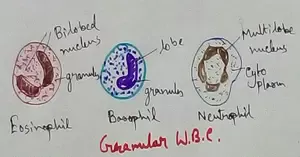Taj Mahal
What can one say about the Taj Mahal, that is left unsaid. The beauty, the aura, the splendour and the magic of the beautiful dome shaped mausoleum in ivory-white marble on the south banks of the river Yamuna has enchanted million and millions of viewers from across the globe and serves as a testimony to eternal love and undying romance.
Commissioned by the Mughal Emperor Shah Jahan in 1632 as a house to ensconce the tomb of his favourite wife, Mumtaz Mahal, the Taj Mahal was completed in 1648 and built on a 17 hectare complex which includes a mosque, a guest house and the main Southern gateway. The outer garden and the cloisters were subsequently added in 1653 A.D. It is one of the most universally acknowledged masterpieces of world heritage, which is emblematic of India and the jewel of Mughal art.
The building of the Taj Mahal was a major project which entailed requisitioning masons, stone-cutters, in layers, carvers, painters, calligraphers, dome builders and other artisans from the whole of the empire and also brought in specifically Central Asia and Iran. The main architect behind the jewelled masterpiece was Ustad Ahmad Lahori.
The Taj Mahal is no doubt the ultimate in architectural achievement in the entire range of Indo-Islamic art. The colour combination of the blue Yamuna, reddish pathway and lush green gardens along with the changing hues of the sky lend it different moods and tints at different timesof the day. The relief work in marble and inlay done with precious and semi-precious stones helps to enhance its beauty even further.
The placing of the mausoleum is a master stroke of craftsmanship wherein the tomb is not placed in the center of the garden but at one end, which lends it depth and perspective, on viewing it from a distance. The raised structure also help in elevating the aesthetic visual imagery. The large double storied domed chambers houses the cenotaph of Mumtaz and Shah Jahan. Which was later added, as per his express request thirty years later. The visual magnificence is retained with the upper cenotaphs recreated for just illusory purpose while the real graves are buried in the lower crypt. The four free minarets standing at each of the four corners provide both special reference and also lend a three dimensional effect to the monument.
Taj Mahal is the finest exampleof architectural and artistic excellence in India which has rightfully placed it as one of the leading wonders of the world with itsperfect harmony and exquisite craftsmanship, designed to mesmerise. The manner in which it was conceptualised, constructed and delivered and the unique blend of symmetry and magnificence is the apex example of Indo-Islamic sepulchral architecture.
Today, the Archaeological Survey of India has undertook steps to control the further deterioration of the Taj, on account of atmospheric pollutants which has led to the discoloration of the ivory white marble and put a check on age related decaying. The area needs to be brought under adequate protection by extending the buffer zone area. Tourist facilities also needs to be further developed and controlled so that the functional and visual integrity of the Taj is maintained.
Recent Articles
-
Formed Elements of Blood | Erythrocytes | ESR |Leukocytes |Neutrophils
Jan 15, 26 01:25 AM
Formed elements formed elements are constitute about 45 % of blood afeias haematocrit value packed cell volume mostly of red blood corpuscles and are of 3 types- erythrocytes, leukocytes and blood pla… -
What Is Plasma? | Blood Plasma | Proteins | Nutrients | Cholesterol
Nov 07, 25 10:29 AM
Blood is a mobile fluid which is a connective tissue and is derived from the mesoderm like cell any other connective tissue. Colour of blood is reddish and that flows inside the blood vessels by means… -
Disorders of Respiratory System | Tuberculosis | Pleurisy | Emphysema
Oct 28, 25 11:39 PM
Tuberculosis is very common disease and is caused by a type of bacteria called Mycobacterium tuberculosis. This disease causes different trouble in the respiration and infection of several parts of th… -
Regulation of Respiration | Respiratory Centres | Inspiratory Area |
Oct 14, 25 12:13 AM
Respiratory Centre is the area that controls the rate of respiration and it is observed to be located in medulla oblongata and pons. Respiratory Centre has the following will dispersed components like… -
Explain Transport of Gases | External Respiration | Tissue Respiration
Oct 09, 25 11:35 PM
In humans gaseous exchange is completed in the following ways the steps are - External Respiration or Breathing - Breathing in false taking in of Oxygen and giving out of carbon dioxide in the body. M…





New! Comments
Have your say about what you just read! Leave me a comment in the box below.